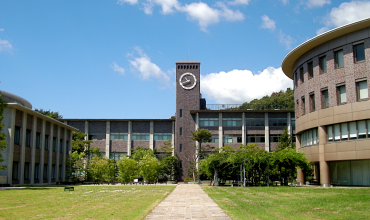Plaxonic Technologies partnered with the Learning and Educational Technologies (LET) Research Unit at Kyoto University to develop the Goal Oriented Active Learner (GOAL) project. The GOAL technology aims to empower learners to become self-directed in this data-driven age by automatically synchronising their learning and physical activity data. Our team was tasked with integrating APIs for data gathering and visualisation, exporting GOAL interactions as API statements in MongoDB, and integrating devices through APIs for physiological data collection and interpretation.
In this case study,
The LET Research Unit at Kyoto University required expertise in developing their GOAL technology platform. They sought a comprehensive solution to efficiently integrate APIs for data gathering and visualization, export GOAL interactions as API statements in MongoDB, and integrate devices through APIs for physiological data collection and interpretation. The platform aimed to support users in analyzing, planning, monitoring, and reflecting on their learning and physical activity data.
Plaxonic Technologies collaborated closely with the LET Research Unit to understand their objectives and design a custom solution that met their expectations. We provided our technical expertise in API integration, data visualization, and device connectivity to create a robust and scalable GOAL platform. Our team's agile methodology ensured timely delivery and effective communication with the client throughout the development process.
Plaxonic Technologies collaborated with Kyoto University's LET Research Unit to develop a comprehensive GOAL platform, integrating APIs for data gathering and visualization, exporting interactions as API statements in MongoDB, and enabling device connectivity for physiological data collection and interpretation.
To develop the GOAL platform, we adopted a systematic approach that involved the following steps:
- API Integration: Our team of developers integrated the necessary APIs, including Emphatic and Emotive, into the GOAL system to gather data and create visualisations. We ensured that these APIs were linked to specific users in a session, enabling seamless data collection and personalisation.
- API Statements: We worked on exporting GOAL interactions as API statements in MongoDB, referring to the existing pipeline in the eBook reader's Java-based API function. This approach allowed the platform to store user interactions efficiently and retrieve them for further analysis and visualisation.
- Device Integration: We connected devices through APIs to collect and interpret physiological data. We utilised the client's Learning Tools Interoperability (LTI) functionalities to ensure seamless integration within the GOAL system. This approach facilitated the gathering of vital information to support users in their learning journey.
- Data Visualisation: Our team leveraged the client's frontend graphing libraries in Angular to visualize or export synchronised signals effectively. This allowed users to analyse, plan, monitor, and reflect on their learning and physical activity data, ultimately supporting their self-directed learning goals.
We employed various tools and technologies to successfully develop the GOAL platform:
- NodeJS: Our developers used NodeJS to develop server-side applications and handle API integration. This technology allowed us to create a powerful backend infrastructure for the GOAL system.
- React JS: We built the user interface using React JS, ensuring seamless data visualisation and an intuitive experience for end-users.
- MongoDB: We chose MongoDB as the database solution to store and export GOAL interactions as API statements efficiently.
- Git: Our team used Git for version control and tracking changes in the source code, ensuring smooth collaboration and project management.
- Docker: We employed Docker to automate the deployment of applications in lightweight containers. This approach facilitated smooth project delivery, scalability, and easier maintenance.
Plaxonic Technologies successfully helped Kyoto University's LET Research Unit create a robust and scalable GOAL platform.
Plaxonic’s expertise was instrumental in developing our GOAL platform. Their proficiency in API integration and data visualization led to a robust and user-friendly system that perfectly aligns with our vision of fostering self-directed learning. A truly reliable and innovative partner

Dr. Rwitajit Majumdar
Principal Investigator - Learning and Educational Technologies (LET) Research Unit, Kyoto University
Do you need help with something? We are here to assist you.
For any further inquiries please do not hesitate to contact us.
Plaxonic is a global IT services, consulting, and business solutions company specializing in digital transformation and innovative solutions. With a team of experts, developers, dreamers & achievers, and consultants, we work on innovative technologies to deliver unmatched functionalities. We operate in six countries and serve clients in over 40 countries worldwide, and are recognized as one of the best places to work.


